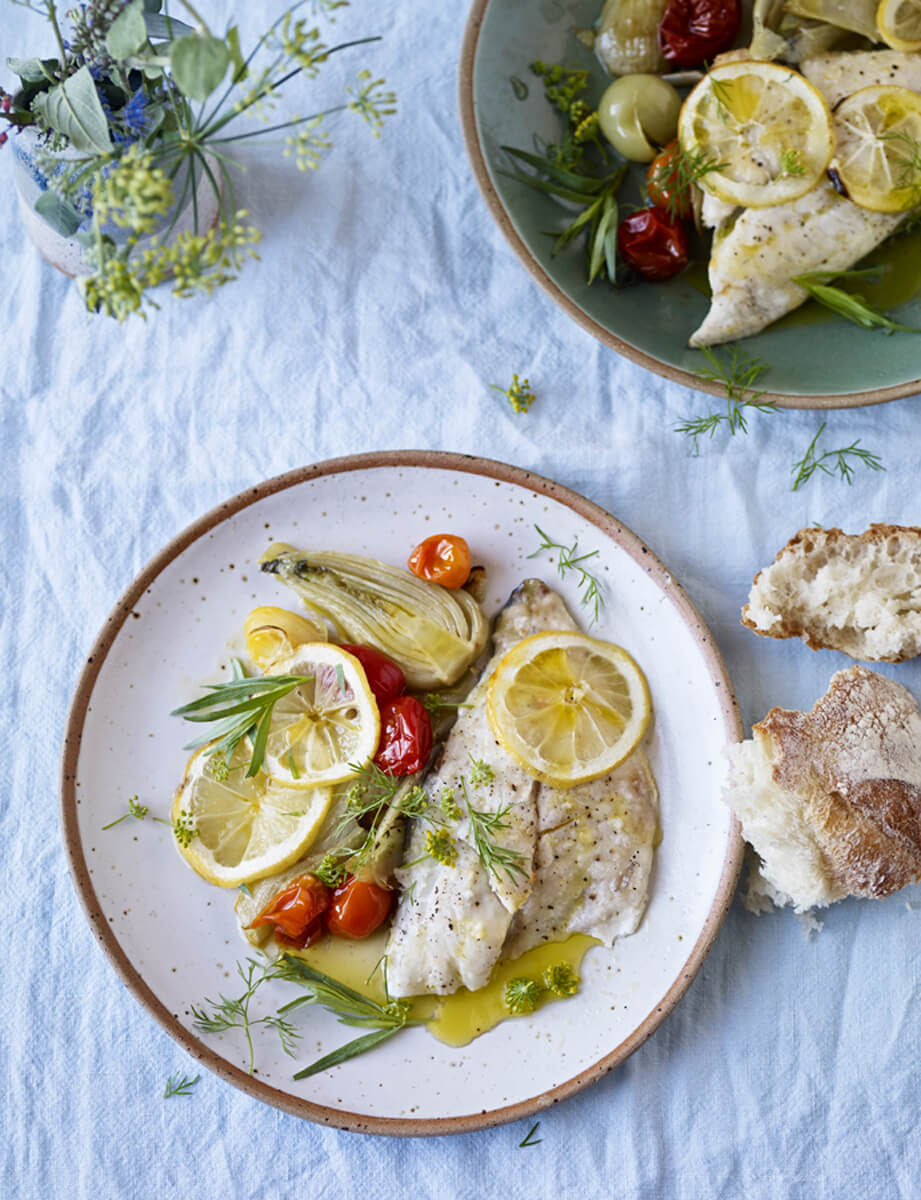

By Eve Kalinik
When it comes down to it our gut, notably our gut barrier, its essentially what separates our internal world from the external one. In the conversation around gut health, there is often a lot of chatter about nourishing the trillions of microbes that live in our gut (collectively the gut microbiome) but often less emphasis is placed on gut barrier functioning even though it has such a huge amount of responsibility. Think of it like the gatekeeper of your gut!
Our gut barrier also has a rather paradoxical role in that on the one hand it needs to be permeable enough to extract the nutrients from our food, but on the other, it also needs to block harmful molecules breaching that defence. This is why we need to aim for a barrier that is both flexible and simultaneously vigilant.
But firstly, what exactly IS the gut barrier?
Well, to massively simplify and break this down into three main areas our gut barrier essentially has a multi-layered line of defence and it is vital that we support all of these to maintain a barrier that is strong and healthy.
One of these lies with our gut microbiome which has a crucially protective role in that our good bugs crowd out potential pathogens to create a harmonious army. These beneficial microbes also produce metabolites that have a positive signalling role as well as a direct impact on immune and intestinal epithelial cells. The latter is the type of cells that line our gut.
Another part of our gut barrier defence is made up of lymphoid tissue known as GALT and includes immune cells like macrophages, T and B cells that are scattered throughout the gut. These help our immune system to recognise friends from foes in terms of potential threats. On a more structural and foundational level, we have an epithelial defence which consists of intestinal epithelial cells that are interconnected with structures called ‘tight junctions.’
You can think of this layer as a gatekeeper that decides what can or cannot pass through from our gut into the bloodstream. The epithelial layer also needs to be flexible to allow this process to happen seamlessly and as such is just one cell layer thick so you can see how it can also be really rather vulnerable.
All being well these different constituents communicate with one another to create a strong and appropriately responsive gut barrier functioning. However, there are many different factors that can compromise this process which include having a low fibre and/or lack of plants in the diet, high ultra-processed foods intake, chronic stress, exposure to chemical toxins, genetic predispositions and certain medications to name a few.
Typically, it also seems to be a cumulative effect of many of these challenges. With many compromising factors for our gut barrier to handle, it can put too much strain on our intestinal epithelial barrier and as such potentially lead to something called increased intestinal permeability, often referred to as ‘leaky gut’. This essentially means substances such as potential pathogens, protein molecules and pro-inflammatory chemicals escape the confines of the gut which creates more of a systemic inflammatory situation in the body and unlike Las Vegas it really isn’t the case of ‘what happens in the gut stays in the gut’.
In fact, although a leaky gut has been linked to many gastrointestinal conditions, it has also been associated with a whole host of other inflammatory and/or autoimmune conditions including Hashimoto’s thyroiditis, rheumatoid arthritis, and diabetes and even depression.
So now you are probably thinking well how do I support and strengthen my gut barrier defence? Well, here’s how…

Eating seasonally and organically as much as possible helps to create natural diversity and rotation of plants as well as having a greater impact on the health of our soil which is then translated into the produce that comes from it. Plus, with organic farming, there is less exposure to pesticides and other chemicals so if you can make some choices to switch to organic the better for your gut and the planet.
TIPS:
Eating organically can be more expensive and with rising costs of living that can be a concern. However, it can be the eat less, eat better approach especially when it comes to meat. Using half lentils and half beef mince, for example, is a simple way to make food go further plus you add in more plants so it’s a win-win. If you have access to some means of growing your own produce that’s another option that is cost-effective, even with a small balcony it is totally possible to grow some herbs. And visit the farmers markets for bargains as this shaves off the supermarket profit so you can find produce at a more reasonable cost. Veg boxes are also another convenient way to tap into eating seasonally.

REDUCE ULTRA-PROCESSED FOODS
Typically, you could think of ultra-processed foods as the white, fried and dyed or the ‘beige buffet’ and ones that have been heavily processed using lots of chemical additives and ingredients such as emulsifiers, added sugars, artificial sweeteners and such like. Same goes for some of the ‘healthy’ fake meat options that are often highly processed. Ultra-processed foods do nothing for our gut microbes and actually, some of these chemicals can have a deleterious effect on our good bugs as well as the functioning of our gut barrier. So we do need to consider how much of these are featuring in our diet and look towards whole foods as much as possible.
TIPS: Whilst I’m not endorsing slavishly checking the back of packets a quick glance will help you decipher, or not as the case may be, what is actually in a product. If you don’t recognise the ingredients as something you would have in your kitchen that’s a good rule of thumb to put it back on the supermarket shelf. Cooking from scratch means you will avoid this in the majority and there are a whole bunch of benefits to this including really connecting with your food and the produce you are using to make it.
MINDFUL DRINKING

Alcohol can have a direct damaging impact on every defence layer in our gut so it is really important to consider a mindful approach to drinking as a key part of supporting optimum gut barrier functioning. I’m all for an odd glass of red wine here and there – and it actually does seem to correlate with having a positive gut health benefit – but anything more than that it has the complete opposite effect.
TIP: Find exciting non-alcohol alternatives to give you that same feeling at the end of the day when you want to reach for a glass of wine. If you need some inspiration, check out my Paloma cocktail recipe https://evekalinik.com/paloma/ or opt for gut-nourishing drinks like kombucha which provide a natural source of beneficial bacteria. Always check for kombucha that has sediment at the bottom so it hasn’t been too heavily filtered. And when drinking always consume with food and stick to a moderate glass.
FEED YOUR FOUNDATIONS
ION* is formulated with a special soil extract that feeds the foundations of our gut and helps to support those gut barrier tight junctions that we need to be operating optimally. This also extends to other barriers such as skin and sinuses too. Really it is all about connection and helping to support that close-knit crucial interaction between us and our microbiome so you can be the walking talking super organism that you are!
References:
Assimakopoulos. S.F. et al (2018) ‘The Role of the Gut Barrier Function in Health and Disease’ Gastroenterology Res. 2018 Aug; 11(4): 261–263. (Online) Available at https://www.ncbi.nlm.nih.gov/pmc/articles/PMC6089582/
Binienda, A et al (2020) ‘Dietary Carbohydrates and Lipids in the Pathogenesis of Leaky Gut Syndrome: An Overview’ Int J Mol Sci. 2020 Nov 8;21(21):8368. doi: 10.3390/ijms21218368 (Online) Available at https://pubmed.ncbi.nlm.nih.gov/33171587/
Camilleri, M (2019) ‘Leaky gut: mechanisms, measurement and clinical implications in humans’ Gut. 2019 Aug;68(8):1516-1526. doi: 10.1136/gutjnl-2019-318427. Epub 2019 May 10. (Online) Available at https://pubmed.ncbi.nlm.nih.gov/31076401/
Khoshbin, K; Camilleri, M (2020) ‘Effects of dietary components on intestinal permeability in health and disease’ Am J Physiol Gastrointest Liver Physiol 2020 Nov 1;319(5):G589-G608. doi: 10.1152/ajpgi.00245.2020. Epub 2020 Sep 9. (Online) Available at https://pubmed.ncbi.nlm.nih.gov/32902315/
Kinashi, Y; Hase, K (2021) ‘Partners in Leaky Gut Syndrome: Intestinal Dysbiosis and Autoimmunity’ Front Immunol. 2021 Apr 22;12:673708. doi: 10.3389/fimmu.2021.673708. eCollection 2021.(Online) Available at https://pubmed.ncbi.nlm.nih.gov/33968085/
Martel, J et al (2022) ‘Gut barrier disruption and chronic disease’ Trends Endocrine Metab. 2022 Apr;33(4):247-265. doi: 10.1016/j.tem.2022.01.002. Epub 2022 Feb 9. (Online) Available at https://pubmed.ncbi.nlm.nih.gov/35151560/
Obrenovich, M.E.M. (2018) ‘Leaky Gut, Leaky Brain?’ Microorganisims. 2018 Oct 18;6(4):107. doi: 10.3390/microorganisms6040107. (Online) Available at https://pubmed.ncbi.nlm.nih.gov/30340384/ Usuda, H; Okamoto, T; Wada, K (2021) ‘Leaky Gut: Effect of Dietary Fiber and Fats on Microbiome and Intestinal Barrier’ Int J Mol Sci. 2021 Jul 16;22(14):7613. doi: 10.3390/ijms22147613. (Online) Available at https://pubmed.ncbi.nlm.nih.gov/34299233/
Accepting payments via


YourHealthBasket © 2025
detoxpeople Ltd
Registered in England & Wales 07156741
VAT reg GB 103 3641 60
Our new practitioner portal has been released and it’s now easier than ever to link a client’s account and provide them with suggestions using our new protocol system.
Convert your current cart into a protocol which can then be assigned to a linked client.